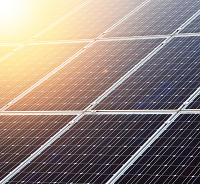

“Not maintaining solar panels can be dangerous and lead to poor performance at best,” says Philip Smerkovitz, managing director of GoThermal.co.za and a 20-year veteran of the thermal imaging, instrumentation and automation sector. He explains that solar panel obscurants such as accumulated bird droppings can cause hotspots. When the latter comes into contact with dry leaves, grasses and bird nests for an extended period of time, this organic material may ignite. Inefficient cells and component faults in the photovoltaic (PV) panel can also cause isolated hotspots or even total panel meltdowns.
Solar panels collect solar energy and convert it into direct current (DC) which is then sent to an inverter. The inverter takes the DC electricity from the solar panels and charges installed batteries which then power homes and businesses.
Hotspots have been in the news recently after US retailer Walmart filed a multimillion dollar lawsuit against electric car and renewable energy firm Tesla. Walmart claims Tesla failed to properly install and maintain solar panels on the roofs of dozens of its stores, leading to them catching fire.
Local retailer Makro last year demonstrated South African business’ interest in renewal energy by installing a 572 kW PV plant on the roof of its Brakpan, Gauteng store. With 2160 solar panels, it’s clear that this typical retail PV installation would benefit from thermal event monitoring that places a premium on efficiency.
“The risk of fire caused by hotspots and failing components is substantially reduced by regularly inspecting roof-mounted solar panels with handheld thermal imaging equipment or with thermal cameras attached to unmanned aerial vehicles (UAVs), or drones,” says Smerkovitz.
“The last thing a local business with a large roof-mounted solar installation wants when trying to save money in the long term by going off the grid is being responsible for a fire which destroys neighbouring buildings,” adds Smerkovitz.
“Most electrical or solar components heat up before they fail. The key is identifying a problem PV panel before critical temperatures are reached. Solar panels are notoriously difficult to access once they are installed and UAV-mounted thermal imaging equipment is an ideal solution to this common challenge. Solar panels without faults are also much more efficient,” concludes Smerkovitz.
| Tel: | +27 11 557 9200 |
| Email: | [email protected] |
| www: | www.gothermal.co.za |
| Articles: | More information and articles about GoThermal (TeleEye) |
© Technews Publishing (Pty) Ltd. | All Rights Reserved.